Are you considering navigating the complex world of intellectual property licensing? This process can seem daunting, but with the right guidance, it can unlock incredible opportunities for your creative works. In this article, we'll break down the essentials of crafting a compelling letter template for licensing your intellectual property, helping you secure what's rightfully yours. So, let's dive in and explore how you can protect your innovations and connect with potential partners!

Agreement Terms
Intellectual property licensing involves legally binding agreements that allow one party to use another party's intellectual properties, such as patents, trademarks, or copyrights. These agreements detail the specific conditions of use, duration, and licensing fees, typically spanning several years depending on the value and demand for the intellectual property. For instance, a technology firm could license a software patent for a five-year term, with royalties calculated as a percentage of sales, potentially reaching millions in revenue. Key terms often include geographical limitations, exclusive versus non-exclusive rights, and the responsibilities of each party regarding enforcement and maintenance of the intellectual property rights. Compliance with these terms safeguards both the licensor's interests and the licensee's operational capabilities. Clear documentation also aids in conflict resolution, ensuring that each party understands their rights and obligations throughout the agreement.
Licensing Scope
The licensing scope in intellectual property agreements defines the boundaries and limitations of the rights granted by the licensor (the owner of the intellectual property) to the licensee (the party obtaining the rights). This includes specifications about the types of intellectual property involved, such as patents (legal rights to inventions), trademarks (symbols or words related to branding), copyrights (rights to original creative works), and trade secrets (confidential business information). Geographic limitations are also outlined, which may restrict the licensee to specific territories, such as North America or Europe. Duration is another crucial factor, detailing the time frame for which the license is valid, often expressed in years. The scope may also specify use limitations, detailing whether the license allows for exclusive (only one licensee) or non-exclusive (multiple licensees) rights, as well as intended applications, such as manufacturing, distribution, or digital reproduction. Specific financial arrangements, including royalties (percentages from sales) and upfront payments, may also be included to ensure equitable benefit for both parties.
Financial Arrangements
In intellectual property licensing agreements, financial arrangements play a crucial role in determining the success of the partnership. Licensing fees typically range from 2% to 25% of gross revenue generated from the licensed intellectual property, depending on the industry and market demand. Upfront payments may be negotiated, potentially amounting to several thousand dollars or more, based on the perceived value of the intellectual property such as patents or trademarks. Royalties are often calculated on a quarterly or annual basis, ensuring that licensors receive consistent compensation. The agreement may include profit-sharing provisions, where both parties benefit from successful commercialization of the licensed property. Additional financial considerations may encompass maintenance fees, milestone payments associated with project developments, and rights to sublicense, which can further influence the financial dynamics of the arrangement.
Confidentiality Clauses
Confidentiality clauses play a crucial role in intellectual property (IP) licensing agreements. These clauses protect sensitive information shared between parties, such as trade secrets, proprietary technology, and business strategies, during the licensing process. For instance, a company like Apple might enter an IP licensing agreement with a startup to utilize advanced software algorithms, necessitating a confidentiality clause to prevent unauthorized disclosure of innovative designs and technical data. Breach of these confidentiality provisions can lead to legal consequences, including damages or injunctions, safeguarding the intellectual asset's value and ensuring that proprietary knowledge remains exclusive. Effective confidentiality clauses often specify terms such as duration, scope of information covered, and remedies for violation, ensuring a strong framework for the trust necessary in licensing negotiations.
Termination Conditions
Intellectual property licensing agreements often include specific termination conditions that outline the circumstances under which the license can be concluded. These conditions may reference the breach of contract, non-payment of royalties, or failure to meet specified milestones related to development or commercialization of the licensed intellectual property (IP). Additionally, the termination clause may establish a notice period--typically 30 to 90 days--during which the offending party can rectify the issue. Furthermore, the clause may describe the post-termination obligations, such as the return or destruction of confidential materials and the cessation of use of the licensed IP, including trademarks, patents, or copyrights. Ultimately, these conditions aim to protect the interests of both the licensor (the party granting the license) and the licensee (the party receiving the license), ensuring clarity in the event of disputes or changes in business circumstances.

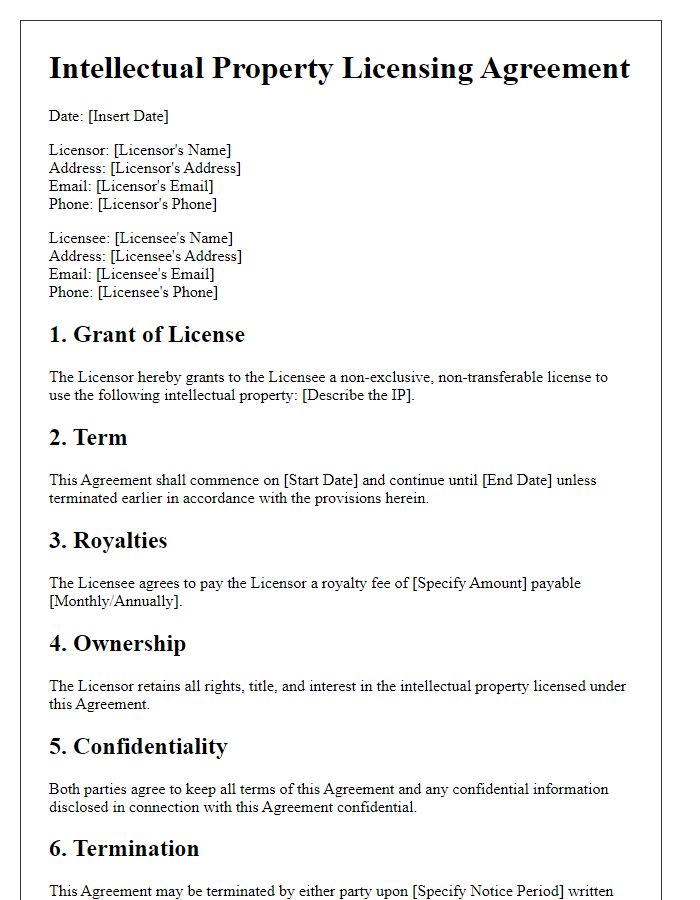
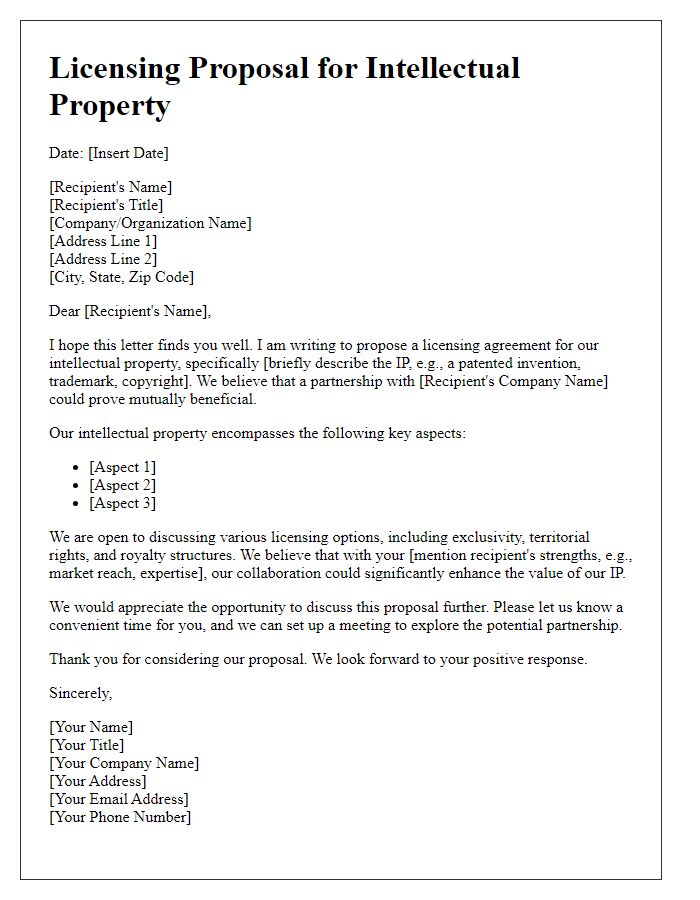
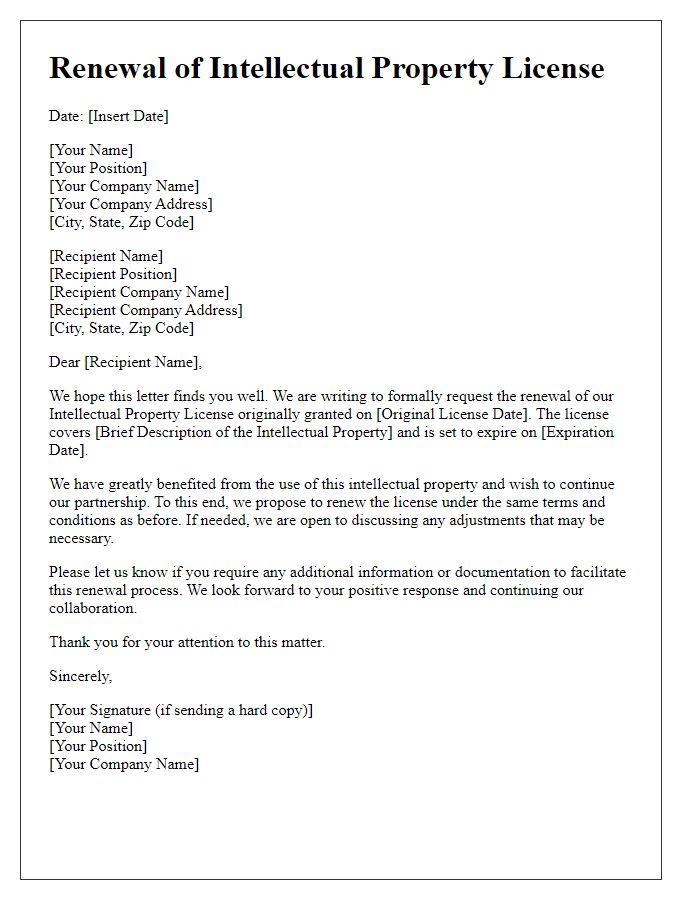
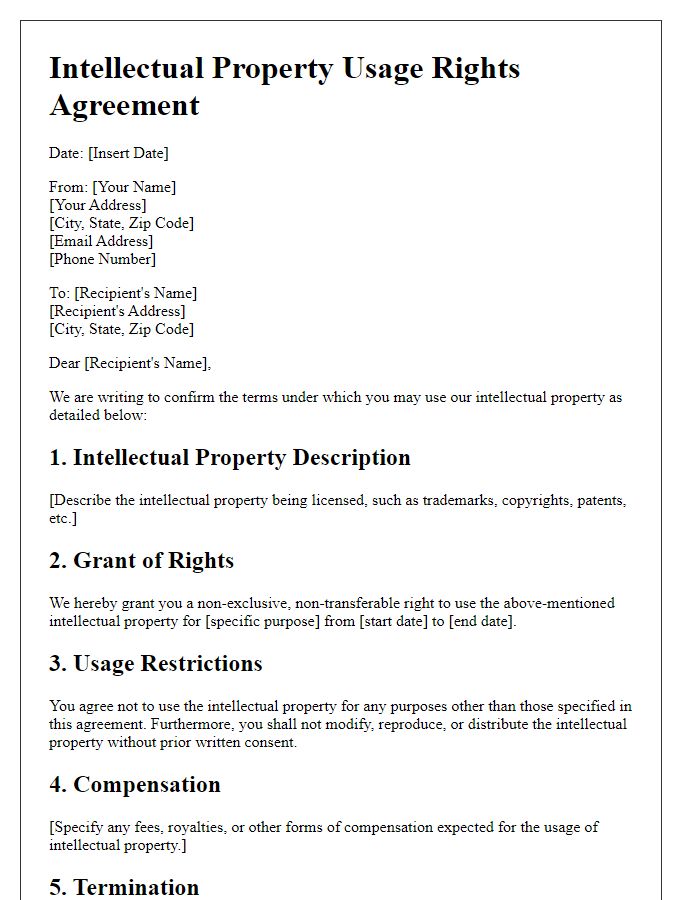
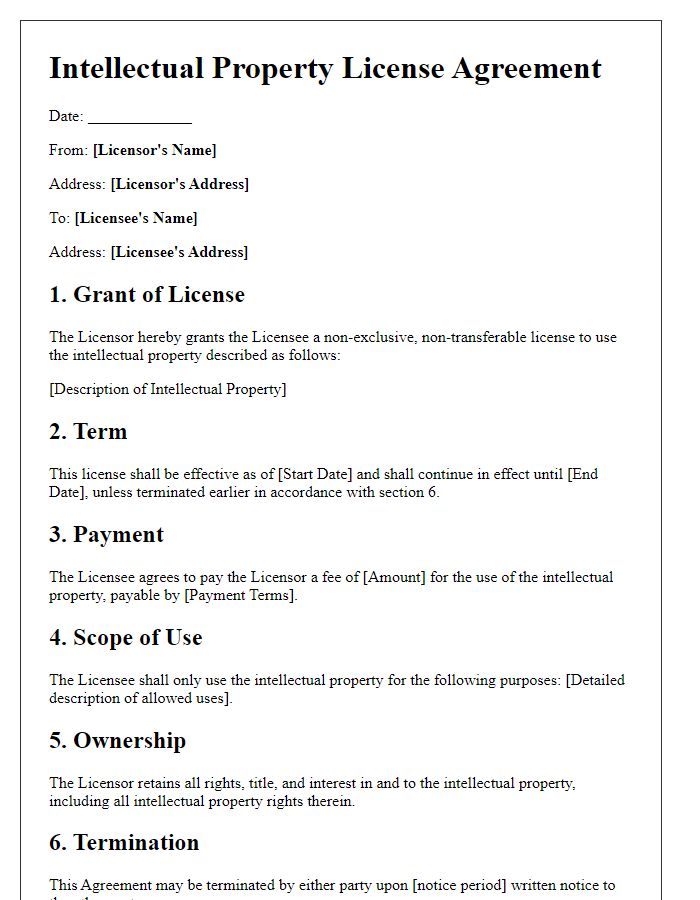
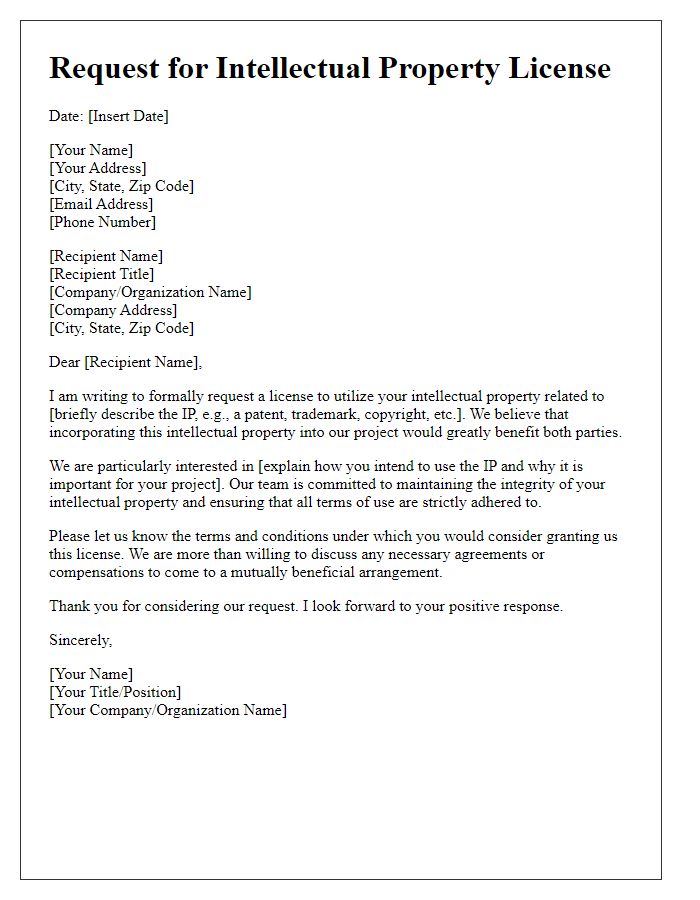
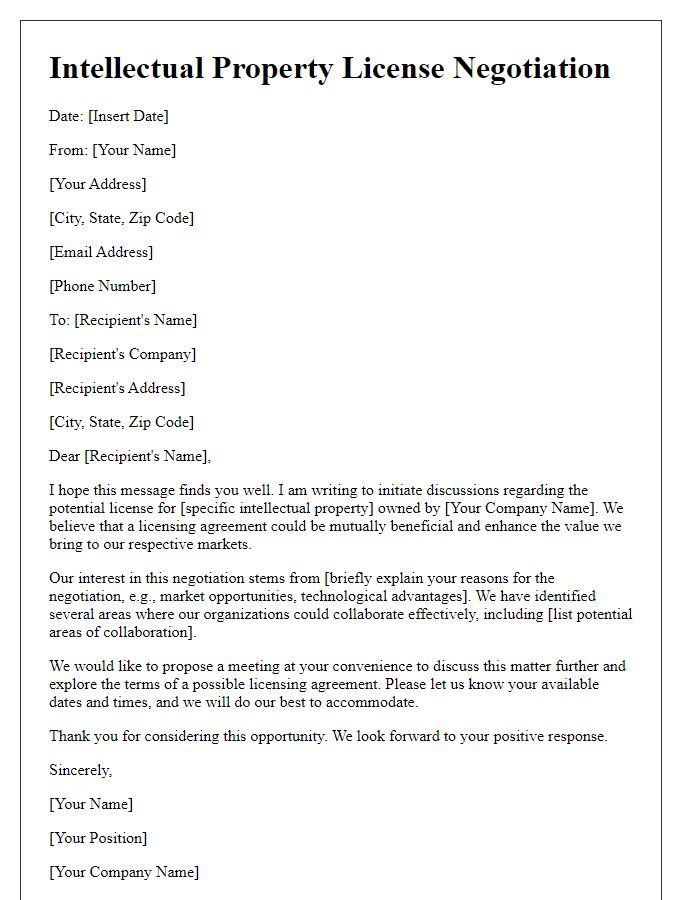
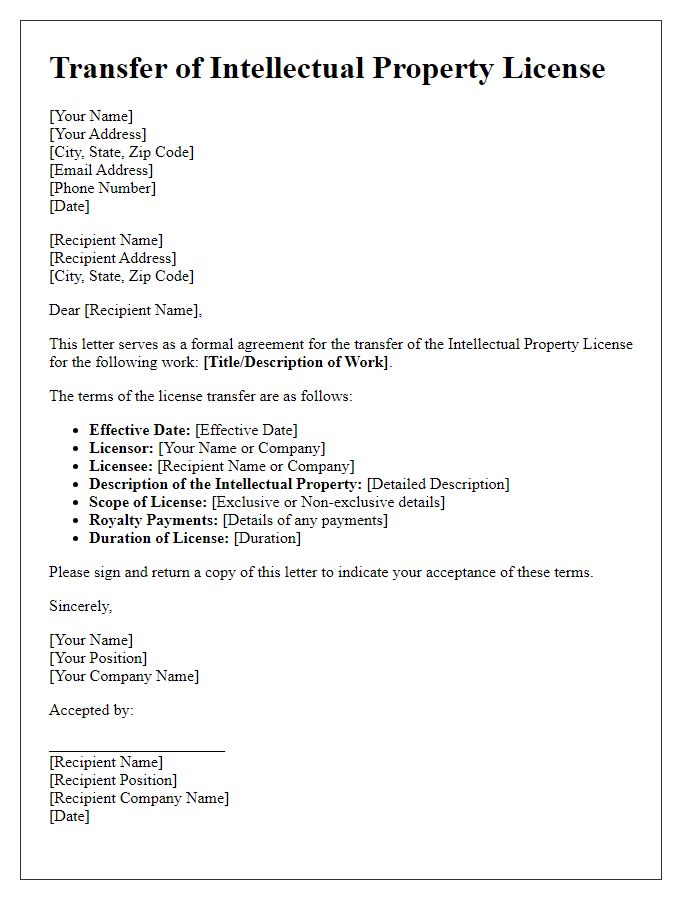
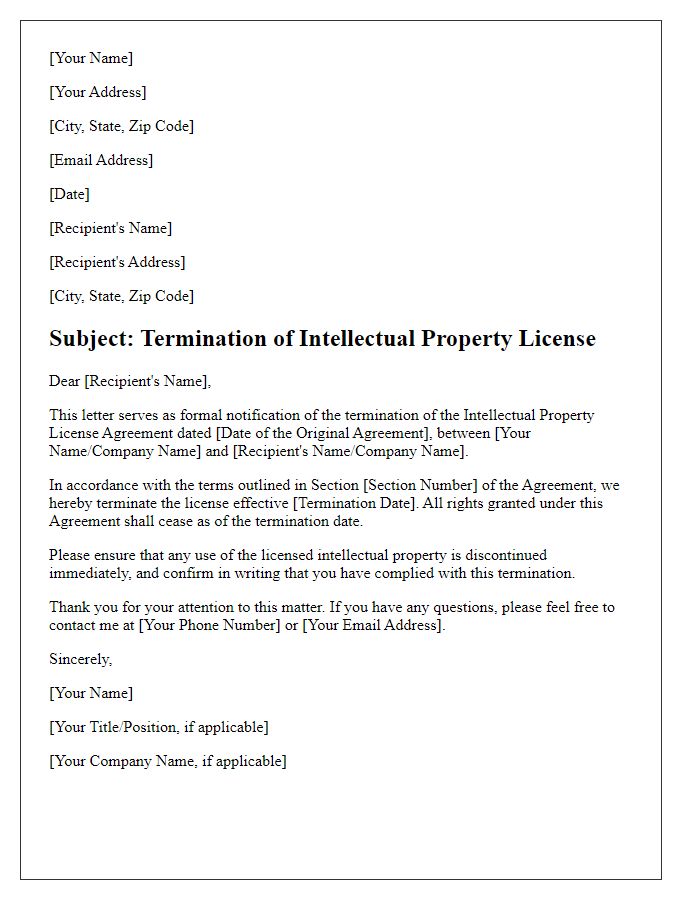
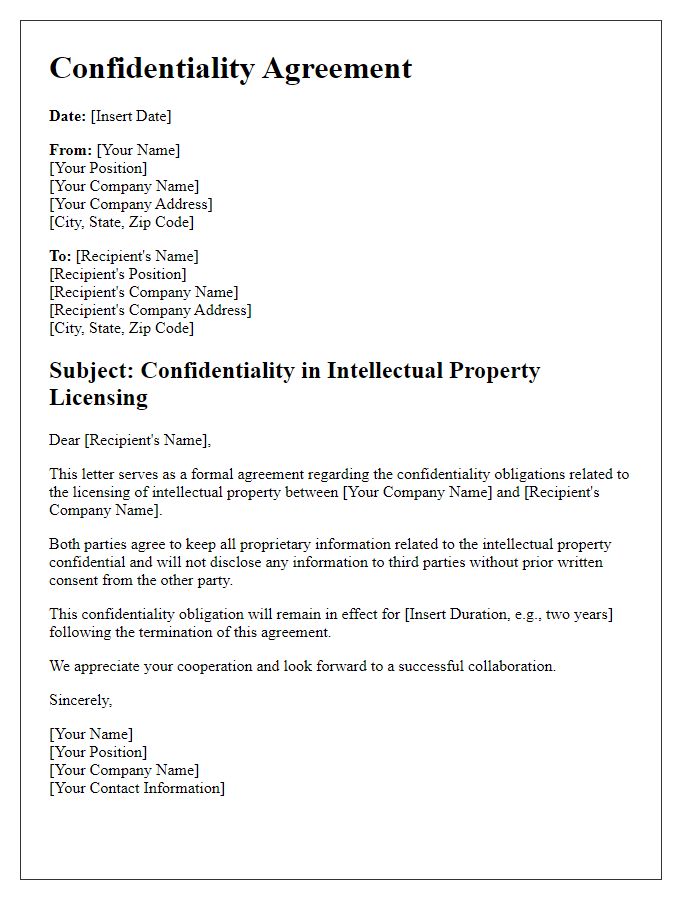


Comments